Four Reto Maron, Honorary President of the Bern Section of the SVMLT
As the author of this short historical account of the Bern Distance March, I take the liberty of writing certain passages in the I/we form, because since 1970 I have had the privilege of being a part of this great event practically without interruption.
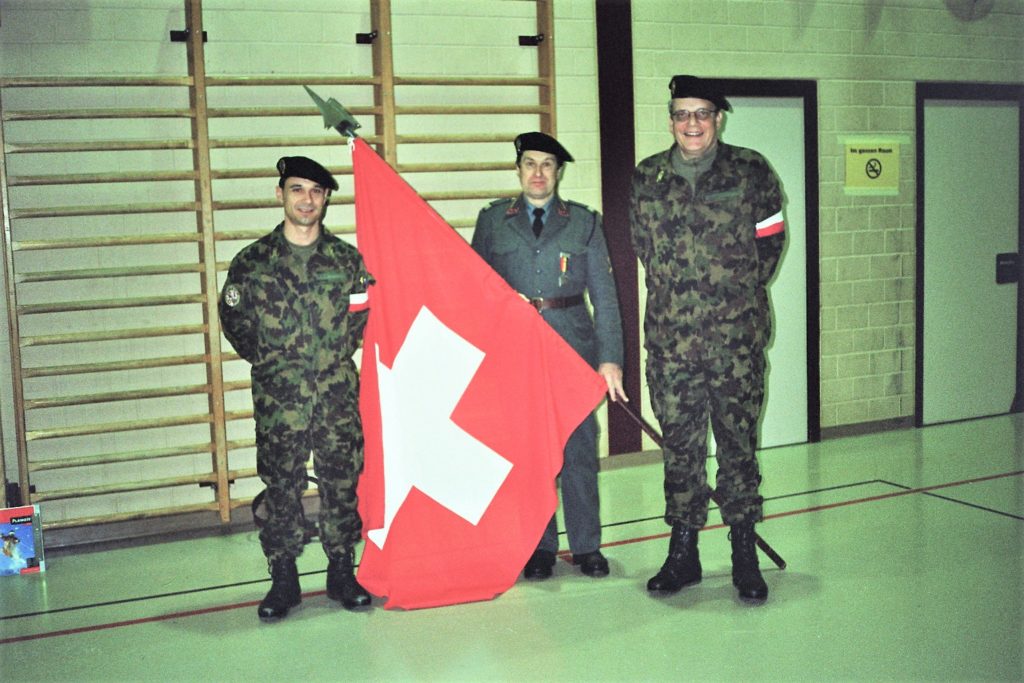
Tradition is not about imitating previous generations. It is about learning from their experiences.
The year was 1956, and the revolution began in October with a peaceful demonstration by students in Budapest. At that time, Hungary belonged to the so-called Warsaw Pact and was thus in the communist area behind the Iron Curtain. All efforts of the countries behind the Iron Curtain to achieve more democracy were brutally suppressed by the powerful Soviet Union, if necessary with military intervention. Thus, this struggle for freedom also ended with the invasion of Hungary by the Soviet army. This also fuelled fears in the West of further military and economic repercussions. Switzerland was not spared either. Incisive measures were taken, including the rationing of fuel.
Although not every household in Switzerland owned a car at that time, quite a few members of the Bern section of the SVMLT were affected by these measures. This was the actual starting signal for the Bern Distance March, also called the Night March at the time. As the general meeting of the Bern Section always took place at the beginning of December, two officers and members of the section had the idea that the general meeting location could be reached by all members on foot from home and at the same time be combined with a military competition. This gave rise to the Berner Distanzmarsch and the two comrades Heinz Krähenbühl and Walter Bürki (who unfortunately passed away) are considered the founding fathers of this traditional event.
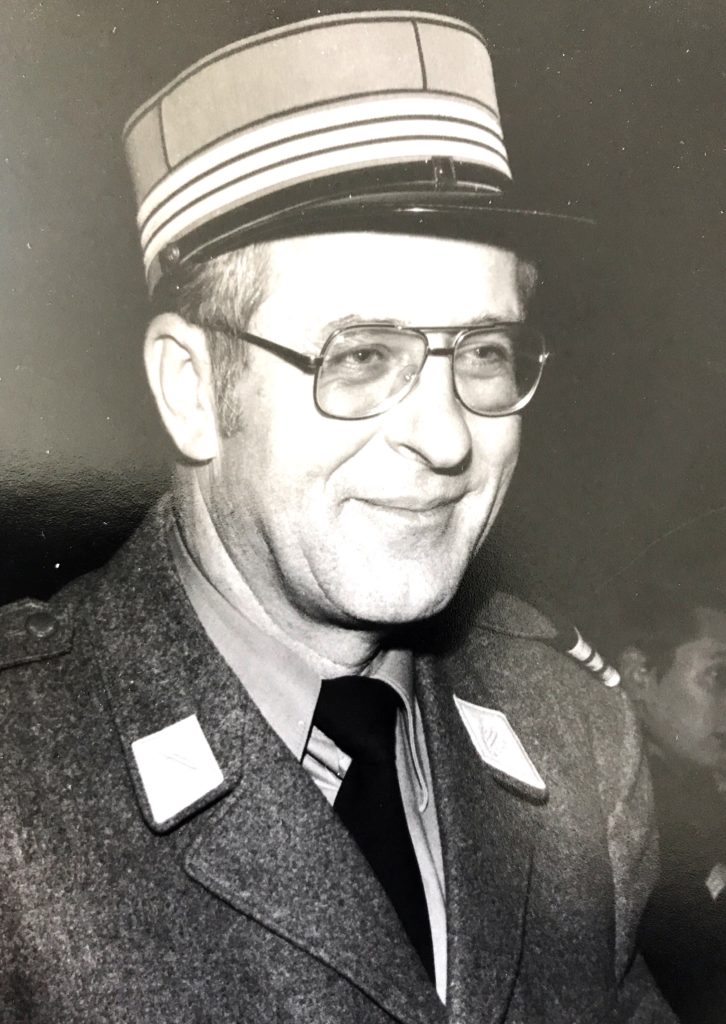
Colonel Krähenbühl 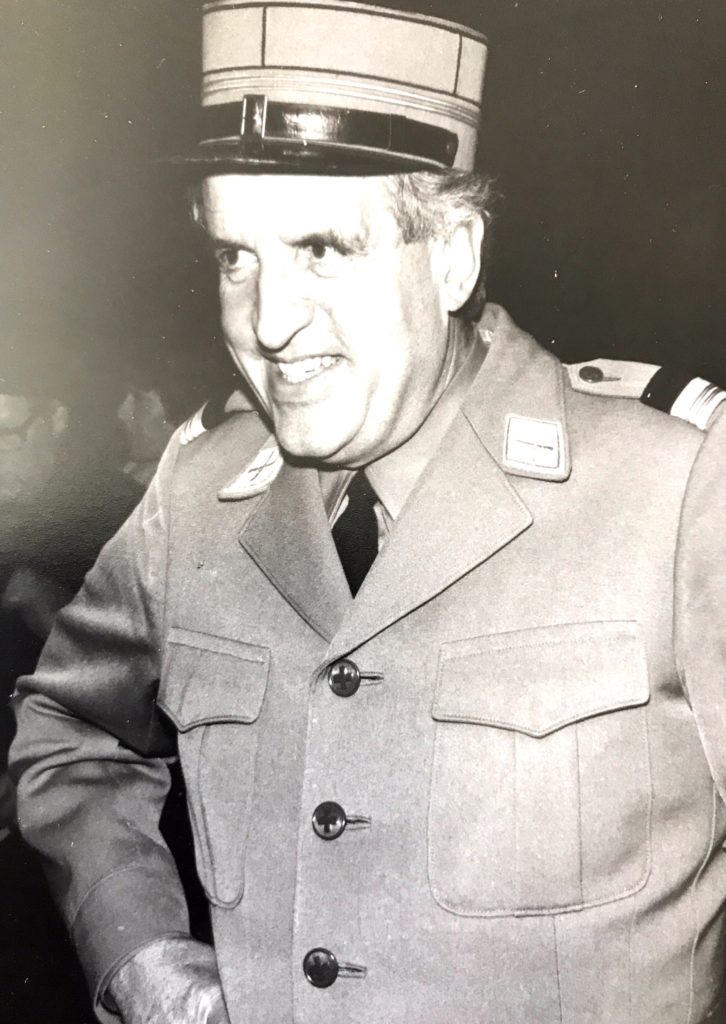
First lieutenant Bürki
The conditions, which were valid and long-lasting at that time, were somewhat different from today. The event lasted from 17:00 on Saturday to 07:00 on Sunday at the finishing line, which for years was also the venue for the annual general meeting of the Bern Section. Hence the name night distance march. The march could be started from any place in the canton of Berne. A certified signature on the start card from an official office (e.g. police station, post office, railway station, parish, etc.) served as confirmation. The participants then had to “thread” themselves into the route network by the shortest route and follow it. Furthermore, with the exception of the Youth & Sport category, only marchers in uniform (military, railway, post office, civil defence, fire brigade, etc.) were permitted. Civilian escorts were not permitted. The scoring was also done according to a special scheme. In order to be eligible for a medal, 70 points had to be achieved with a minimum marching distance of 10 km. In addition to the kilometres (from 30km onwards they were counted double) and the age, the weapons and the weight carried in the rucksack were also evaluated. As a result, 10 large scales were set up in the finish area to weigh the rucksacks. Unfortunately, the contents of these backpacks were never checked and we only noticed after a long time that the piles of stones had decreased shortly before the finish and that new mountains had appeared after the finish.
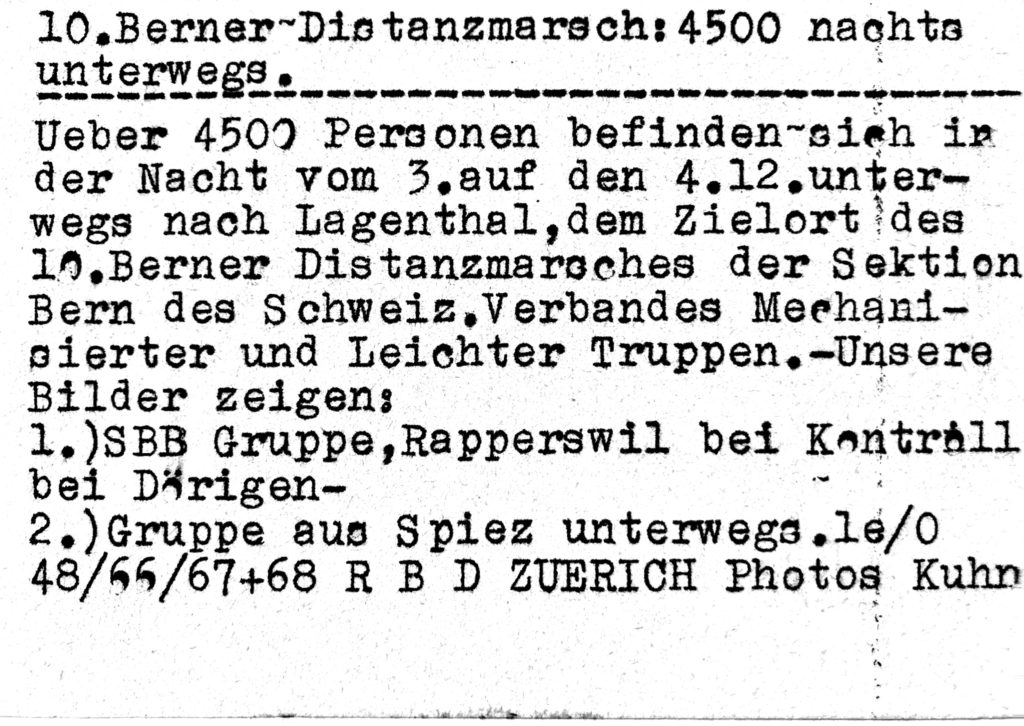
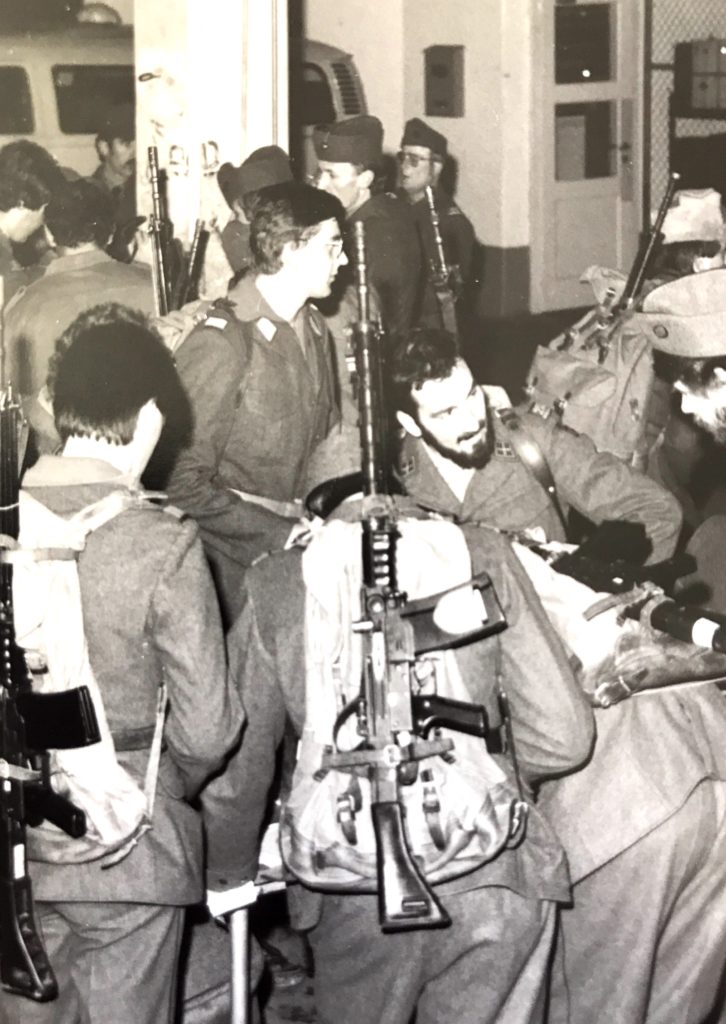
heavily packed 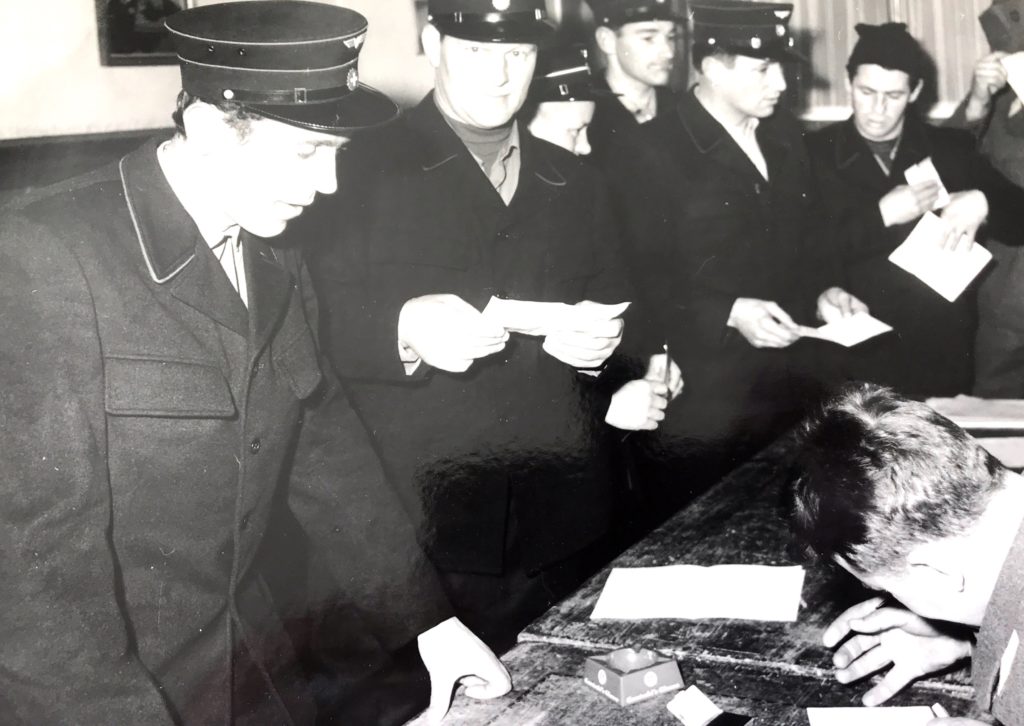
participants waiting at the SBB station 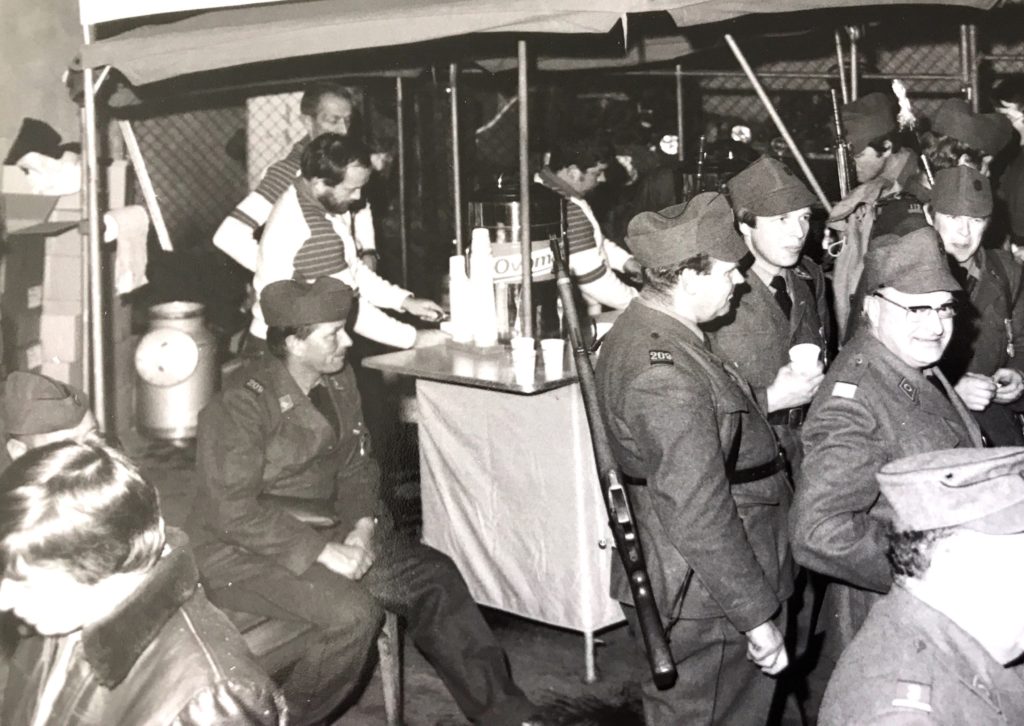
“Food truck”
Under the command of Colonel Heinz Krähenbühl, we were able to hold a very successful event every year at the beginning of December. Whether it was cold with frozen roads, rain, snow, but also pleasant conditions, we were fortunately spared any serious incidents. As the long-distance march lasted all night, we had to deal with drunken participants from time to time, so that minor skirmishes were not absent. However, these were always settled by the security forces, so that the entire process was not affected. Even when the headline in the “Blick” newspaper “Breakout from Thorberg Prison Thanks to Bern Distance March” caused a sensation, this did not upset us. The solution was quite simple: the destination of the march was Burgdorf and many marchers chose the route via Krauchthal. This meant that many participants were on this route, so that the escapees could mingle with the marchers unnoticed. As far as I know, this was of no use to them, because they were caught again a little later. Today, such a stream of marchers would hardly be conceivable. During the best times of the Bern Distance March, however, we were able to welcome around 6,000 participants.
At that time, the organisational effort was also enormous. Just imagine, the term EDP or IT did not yet exist in any dictionary, everything was done by hand. Sending out about 7,000 invitations to tender, checking and booking payments, dealing with enquiries, etc. took up an enormous amount of time. Without the support of the then BAMLT (Federal Office of Mechanised and Light Troops) and countless helpers, this work could never have been done. E-mail was a foreign word and the photocopier could only be used in emergencies for cost reasons. The in-house printing material centre was responsible for printed matter, and other things were laboriously produced using alcohol or wax matrices, as was the case in the evaluation.
Speaking of evaluation: these were the hallowed halls of distance marching back then. At around 04:00 in the morning, the very popular and sadly deceased Colonel Eric Burn would float in with his (mostly female) entourage. Screen, mouse, keyboard? Not a thing. The former tools back were called Hermes Ambassador or IBM ball head and a lot of matrices and paper to reprint. As soon as the evaluation started, all you could hear was the clatter of typewriters and the whisper of thousands of marching cards being sorted. If we dared to enter the sacred halls of the evaluation for information, we were greeted with a shush and walked on our toes to avoid any noise.
Under Colonel Heinz Krähenbühl, a strict regime prevailed, also with regard to handing out the medals. Nobody, but really nobody, who did not fulfil the conditions received a medal. At 07:00 sharp, the gates of the finish were closed. Anyone who arrived even 10 seconds later was not ranked and did not receive an award, regardless of whether they had 50km / 100km in their bones. Legendary was also the officials’ pre-march. Every official who wanted to wear a medal had to fulfil the same conditions as the competitors. So the so-called pre-march took place on the same route about a month before the actual march, with the only difference that they simply marched on one axis. In order to reach the 70 points, one simply had to join this axis sooner or later, so that one covered the necessary marching distance.
Our march did not go unnoticed in neighbouring countries. The starting signal for international participation came in the 1980s with the participation of the marching group Südbaden under the leadership of Hptm Duderstadt. This was a sensation at the time and upgraded the distance march. By the way, comrade Duderstadt remained loyal to the long-distance march for many years and was always a very welcome comrade.
In the following years, more and more contacts were made with foreign armies and long-standing friendships developed, e.g. with marching groups from Austria, which have remained loyal to us to this day. The majority of foreign comrades have always been guests from Germany. In the 1980s, members of various sections of the SVMLT were invited to participate in the legendary Saarschleife exercise in the beautiful Saarland. Among others, I was allowed to roam the forests and meadows of the Saarland several times. As a return invitation, a delegation of reservists from the Saarland visited the Bern Distance March. This resulted in a deep comradeship and friendship between the Saarland Reservist Association and the Bern Section of the SVMLT, which was documented in a sponsorship agreement. Today we no longer speak of guests, because these comrades have become a part of us. Individual participants have already completed more than 20 long-distance marches and have also provided welcome offspring for their families. At the present time, a long-distance march would have been unthinkable without international participation, also in terms of the number of participants.
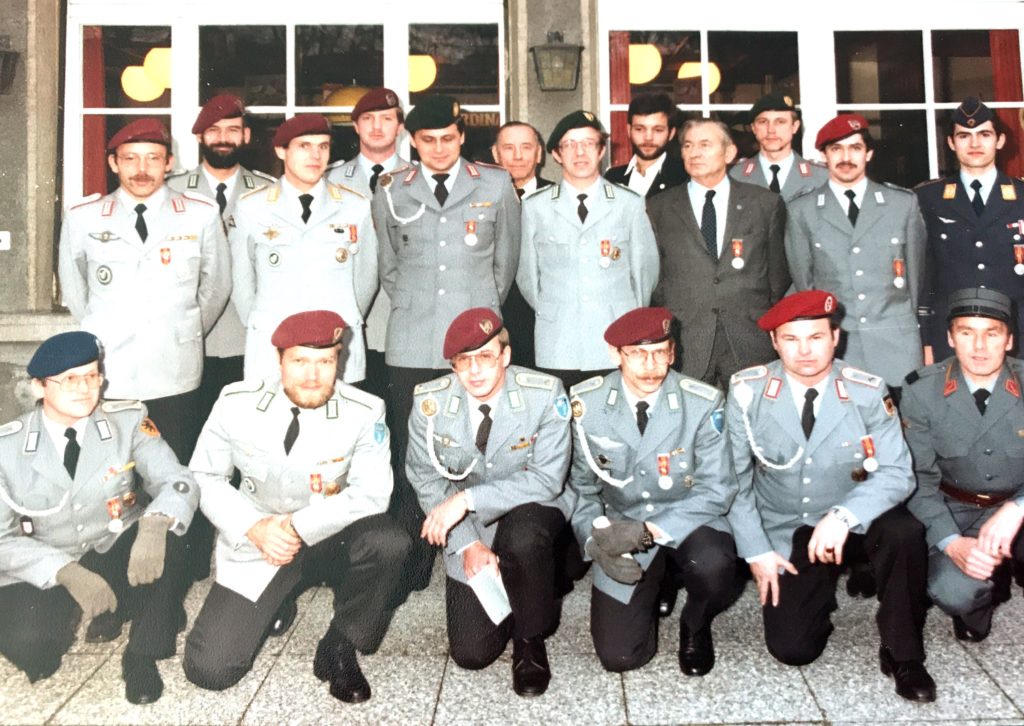
Times changed constantly and the distance march also had to adapt to new needs. For example, we decided to simplify and adapt the entire scoring system by no longer counting the luggage carried. In the end, only the kilometres covered and the age were decisive. In order to encourage more younger people to take part in the march, we moved away from a pure night distance march and made it possible to start at 12:00 and finish at 22:00. This was done with the consideration that, especially for younger participants, the Saturday evening was free for going out. There was also an increasing demand for civilians to participate. We therefore decided to start with a “Him & Her” category. This was also done after careful consideration in the direction that there was no longer any reason for the female partner to prevent her partner from participating in the distance march. She was allowed to accompany him from now on.
The biggest step, however, was my idea as the former President of the Bern Section of the SVMLT to separate the distance march from the general meeting and thus break with a long-standing tradition. We found that many members who completed the march stayed away from the AGM because they gave priority to a well-deserved bed rest. Those members who persevered and still attended the AGM after 40, 50 or more kilometres were in danger of falling asleep and it was not uncommon to hear loud snoring from one corner or another.
Despite all efforts, the ravages of time gnawed away at our event and it became increasingly difficult to find officials and recruit participants, and voices were raised to abandon the Berner Distanzmarsch. Fortunately, at this critical time, a comrade and long-time expert of the military marching scene was found in the person of Hptm Ruedi Lehmann, who fought in the front line for the continuation of the Berner Distanzmarsch. Together with Major Urs Burkhalter as competition commander, they led the event back to success.
In the meantime, their successor has been found and with the current competition commander, Hptadj Adrian Venner and his staff, the long-term continuation of the traditional Berner Distanzmarsch is absolutely guaranteed. The new leadership guarantees the stability and preservation of the event in the spirit of the founding fathers, adapted to the new times. The success proves us all right, because which event can look forward to a successful future even after more than 60 years of existence? Speaking of loyalty and future: At this point I would like to mention one comrade in particular, namely Pol Wm Fürst Paul, who has so far completed ALL distance marches without any gaps. This is the best proof of what the word loyalty means.
A milestone and proof of the commitment and flexible attitude of the young team was the holding of the Remote March 2020 on the occasion of COVID-19. The approximately 600 participants proved their loyalty and interest in the Berner Distanzmarsch, which inspired the staff to lead the Berner Distanzmarsch into a secure future with the same commitment.
Another personal word from the author:
I understand this historical review as a homage to all comrades, many of whom have unfortunately already passed away, who have helped over the years, whether as officials or participants, to help the endurance march achieve the success it deserves. At the same time, this should be a motivation for the next, younger generation to continue the tradition of the Berner Distance March with great commitment and to the best of their knowledge and belief, and I am convinced that this will be the case.

